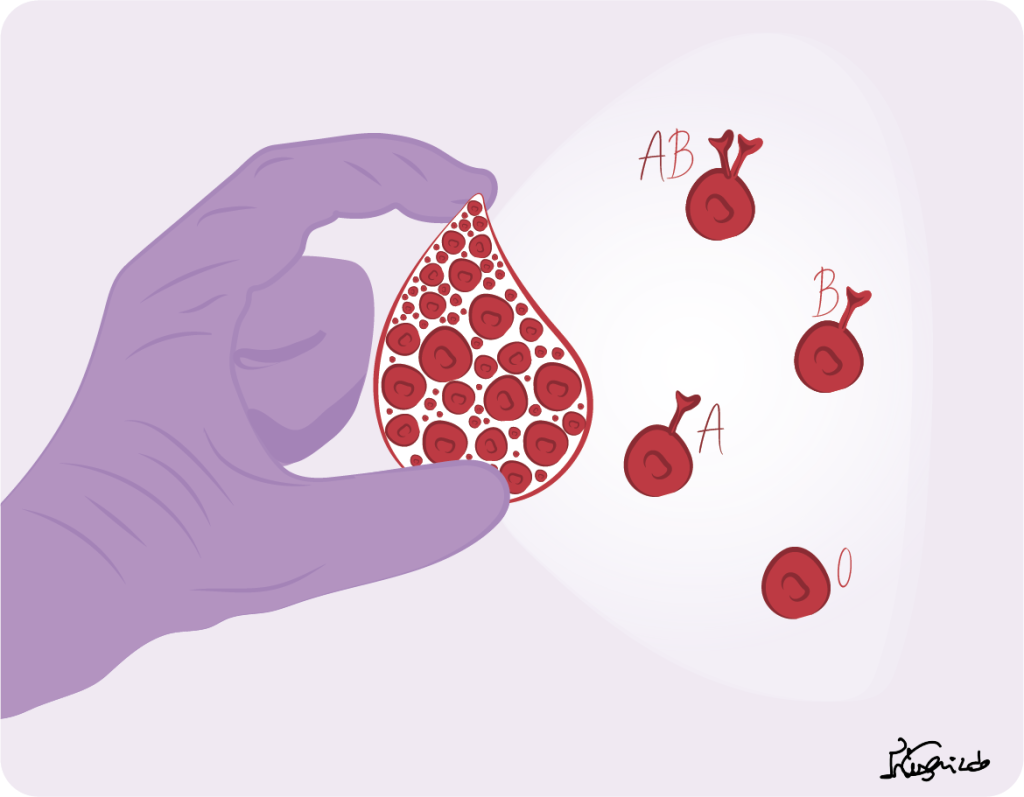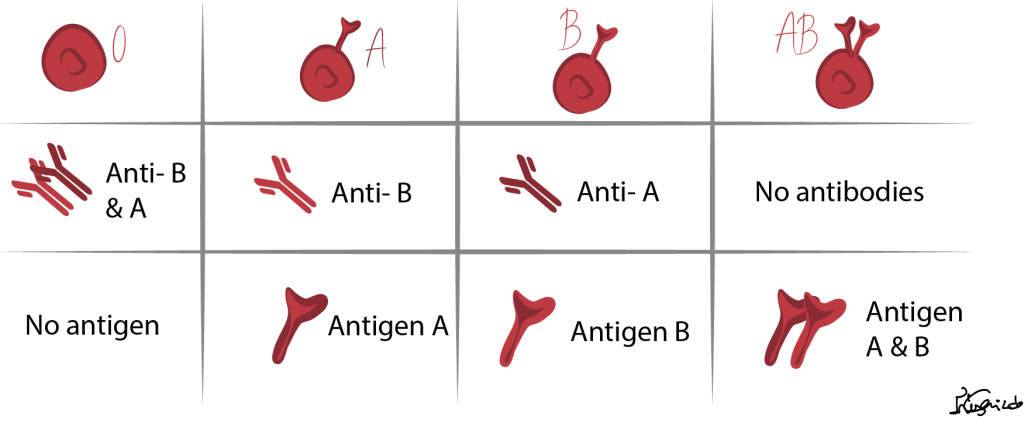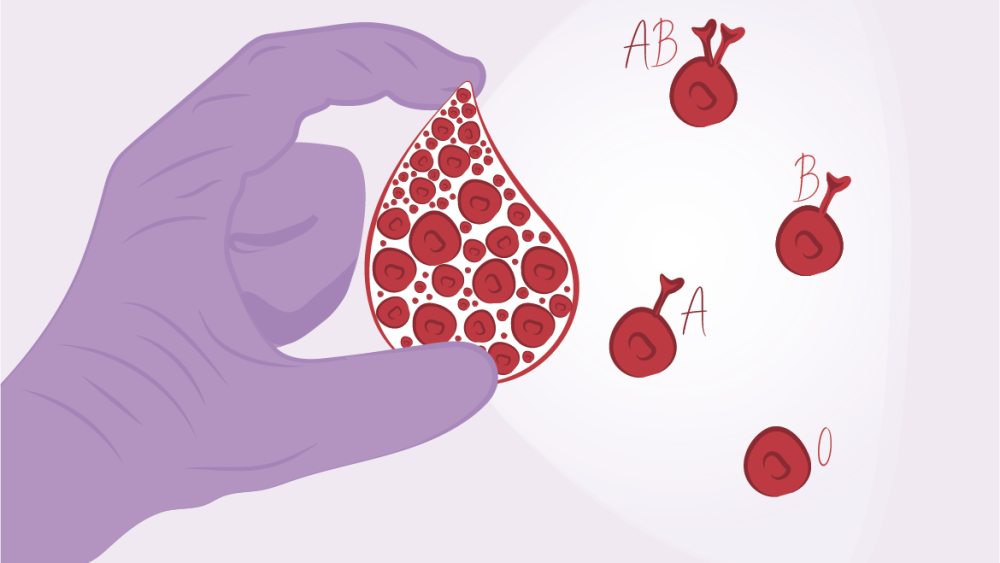Today, on the 14th of June, is World Blood Donor Day. It has been promoted by the World Health Organization (WHO) over the last 20 years to highlight the importance of blood availability in healthcare and to celebrate voluntary blood donations worldwide.
When we think about blood, there is so much we could write about. From the cells that compose the blood, to how blood donations can save lives. We could even try to talk about vampires (that would be a fun challenge to address on a science blog…).
But today we will focus on something related to the history of this date. The day of June 14th was chosen as an homage to the birthday of the Nobel laureate Karl Landsteiner. And if the name is unfamiliar, don’t worry, because I’m about to tell you WHO he was (see what I did here?).

Blood transfusions date back to the 19th century. The concept of solving big blood losses with the injection of blood donated by other people sounded, at first sight, like a not-very-complex idea, right? Blood is lost -> Blood is replaced -> Problem solved.
Well… No.
At this time, many of the transfusions ended up in death. It had such a low probability of success, that it was highly avoided or even rejected by most doctors.
But why did this happen?
This is where Karl Landsteiner’s work came in. The fact was that when blood from different people was mixed, the red blood cells ended up clumping. In 1901, Landsteiner discovered that this was due to an immune reaction triggered when two bloods were mixed. A reaction that happens because the blood receiver has antibodies against the blood cells of the donor.
But not 100% of the time. Not with everyone. Why?
The answer is something you probably already heard about: Landsteiner identified the three blood groups A, B, and O. Blood transfusion between persons of the same blood group does not result in an immune reaction and, therefore, no adverse effects happen.
This is called the ABO blood group system: a person’s blood type depends on what kind of antigens (small molecules that can trigger an immune reaction) their red blood cells have on their surface. One can have only A antigens (type A), only B antigens (type B), both A and B antigens (type AB), or none at all (type O).
However, a person does not necessarily need to only receive blood from the same blood type. Some blood types, despite being different, can be compatible.
This is due to the kind of antibodies that each person produces against the other blood types. A person with type A blood will produce and have in their blood antibodies against B antigens (the antigens that their blood cells do not have) and vice-versa. Therefore, a type A person cannot receive type B blood, and vice-versa. Otherwise, the antibodies they produce against the opposing blood type will trigger a reaction.
A person with type AB blood will not produce antibodies against either antigens A or B. This means an AB person can actually receive blood from every blood type (lucky bastards…). Even if the donor blood is just type A or type B, the AB person does not have antibodies against either of these, so no risk for any reaction.
What about type O? These are special cases. Their red blood cells have no type A or type B antigen. But their immune system produces antibodies against both antigens. This means that if they receive blood from any other blood type (A, B, or AB), they will have an immune reaction. This makes it so that type O people can only receive blood from other type O people (poor guys…). On the other hand, they can donate blood to any other person, because their red blood cells have no antigens at all, and therefore will cause no adverse reaction in any other person whether they have antibodies against A or B or both. They are so-called universal donors! But they cannot receive blood from any other blood group… (Evolution can be a real bitc… piece of work sometimes.)

Landsteiner performed a pioneering discovery and allowed for blood transfusions to go from a completely avoidable procedure to one of the most common interventions, saving countless lives.
Since then, other blood types have also been described (red blood cells can have other antigens besides A and B that can make them more or less compatible between them). For instance, the AB categorization is usually followed by a + or -, related to another antigen system, which is also very important to take into account when planning transfusions.
Although blood transfusions can save lives, blood donations are constantly needed. That is exactly what is celebrated on this World Blood Donor Day.
So, if you can, remember to give blood.
And happy blood donor day!


https://Bandur-ART.Blogspot.com/2024/08/the-ultimate-guide-to-no-mans-sky-mods.html
Woah! I’m really enjoying the template/theme of tgis website.
It’s simple, yet effective. A lot of times it’s difficult to get that “perfect balance” between superb usability and
visual appeal. I must say you’ve done a amazing job with this.
In addition, the blog loads very quick for me on Chrome.
Outstanding Blog! https://Bandur-ART.Blogspot.com/2024/08/the-ultimate-guide-to-no-mans-sky-mods.html
BaddieHub
BaddieHub This is my first time pay a quick visit at here and i am really happy to read everthing at one place